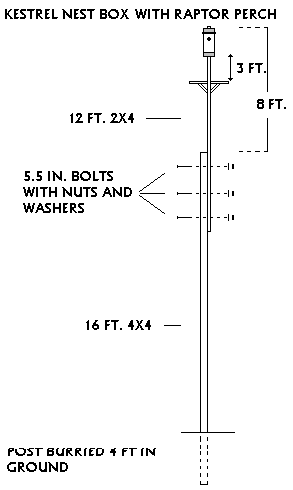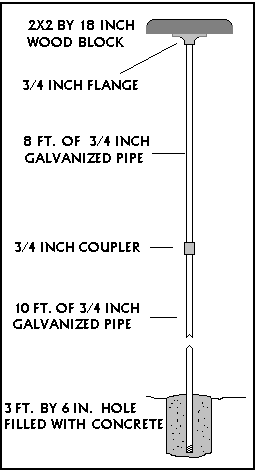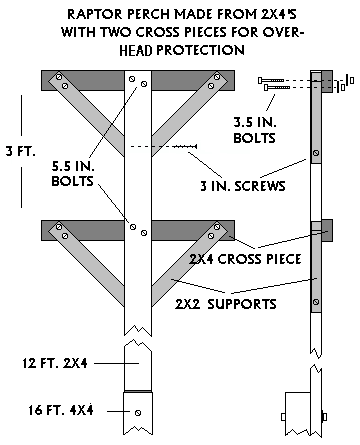Raptor Perches
by Bio-Diversity Products
Most raptors hunt in flight. Perches can be used
to increase the presence of these predators, influencing both
bird and rodent control. This is particularly true during winter
and early spring months when crops are not present or provide
little ground cover, and in areas where natural perches have been
removed.
Consider the following points when designing
raptor perches.
- The perch should stand fifteen to twenty feet tall. One
method to achieve this height is to securely bolt
together a twelve foot 2 x 4 to a sixteen foot pressure
treated or redwood 4 x 4, over-lapping the two pieces by
three or four feet (Figure 1 ).

Figure 1.
- A second method (right), utilizes 18 feet of galvanized
3/4 inch pipe set three feet in the ground and stabilized
with concrete. The cross piece is attached with flange
with 3/4 inch thread. (Figure 2)

Figure 2.
- Raptors show a preference toward perches that provide
protection from attack from above and behind. The design
in Figure 3 below achieves this by placing two cross
pieces at least 3 feet apart. Attaching a kestrel nesting
box three feet above the lower cross piece will
substitute for the upper one, (shown in Fig. 1.)
providing the birds with a sense of security as well as
nesting space for these predators. Cross pieces should be
fairly substantial in size. A minimum size would be 2 by
2 by 18 inches long. Two by fours, 18 to 24 inches long,
are recommended. Strength and stability are important.

Figure 3.
- Perches should be oriented so that the cross pieces point
east and west. This provides optimum visibility for the
perching birds with respect to early morning and late
afternoon light.
Back to Barn Owl
Headquarters
